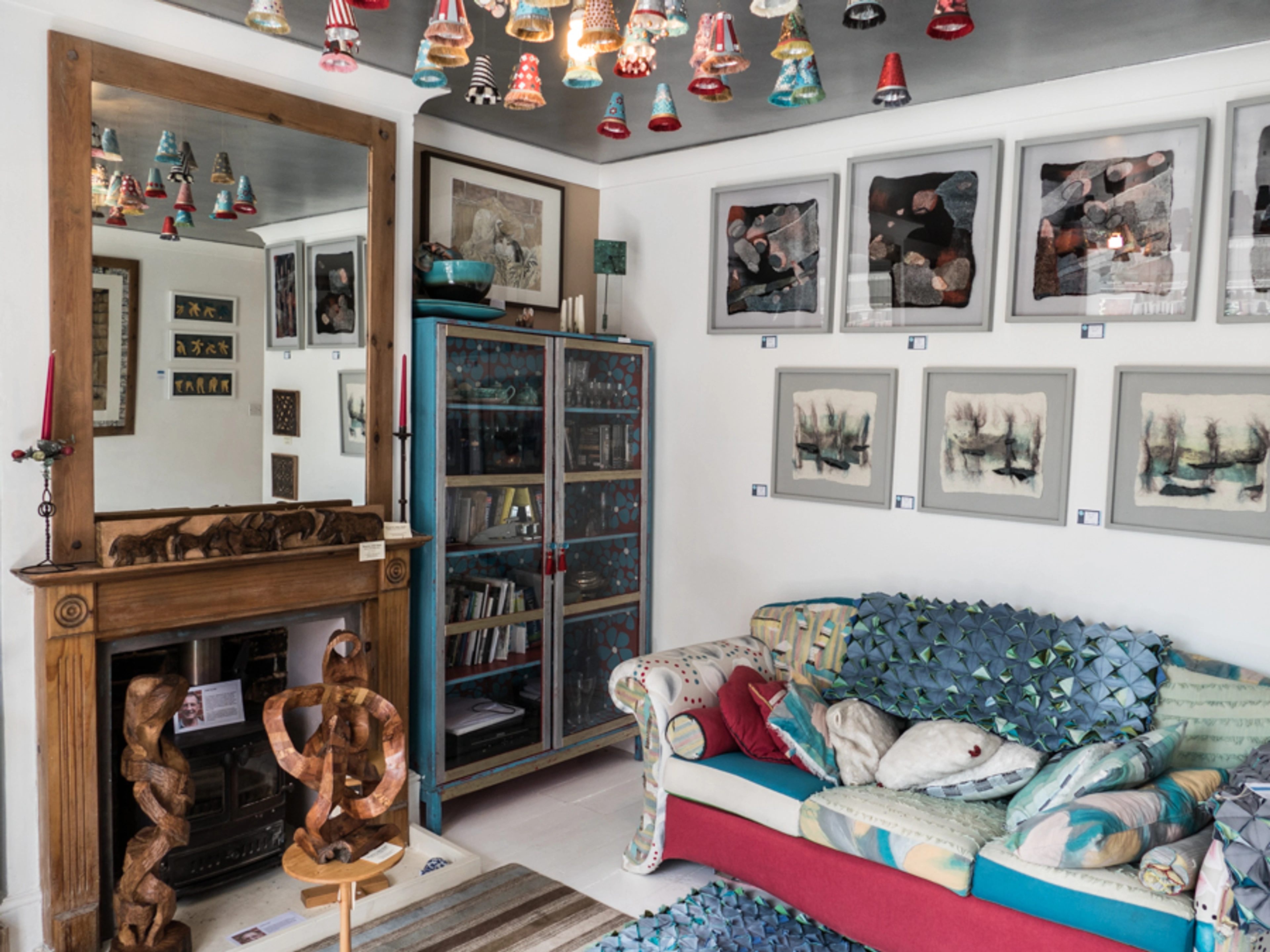
Creative Sculpture Displays Indoors: Beyond the Pedestal & Into Your Life
Discover how to integrate dynamic sculptural forms into your everyday life. Break free from conventional display norms and embrace creative, personal expression, transforming your home into a living gallery.
Is your sculpture truly living in your home, or just visiting?
Creative Sculpture Displays Indoors: Beyond the Pedestal & Into Your Life
I used to think sculpture was... well, a bit intimidating. I remember wandering through a grand museum hall once, staring at a majestic marble figure perched high on its plinth. It felt so serious, so untouchable, demanding nothing less than hushed reverence. The unspoken rule seemed to be: admire from afar, do not interact. But then, a funny thing happened. I started collecting my own pieces, especially abstract and contemporary ones, and brought them home. Suddenly, that traditional pedestal felt entirely wrong. Too formal, too expected, too much like a museum exhibit rather than a living, breathing part of my space.
This journey is about rediscovering how to integrate these dynamic forms – the very essence of what makes modern sculpture so compelling, be it abstract, kinetic, figurative, or biomorphic – into everyday life. It’s less about grand statements and more about playful, personal expression. For centuries, art wasn't just admired; it was integrated into daily life. Think of the vibrant frescoes in Pompeii or the intricate Roman mosaics adorning villa floors. Even movements like the Bauhaus, in its pursuit of unifying art, craft, and technology, blurred the lines between sculpture and functional design. Art wasn't separate; it was part of the fabric of living. Now, many of us are rediscovering that joy. Sculptures, especially those with dynamic forms or intriguing textures, crave integration – a chance to become part of your everyday narrative. This is my journey in turning that traditional intimidation into playful exploration, empowering you to break free from conventional display norms and embrace creative, personal expression. This article is all about helping you display your sculptures indoors with genuine personality and flair. So, I started experimenting. And let me tell you, some experiments were brilliant; others, well, let's just say my cat had a few new toys for a day before I learned a valuable lesson about secure placement. But through it all, I learned that displaying sculptures indoors is less about following a rigid rulebook and more about embracing creative chaos, personal expression, and a little bit of playful intuition.

Beyond the Pedestal: Integrating Art into Your Space
My first big realization was that a pedestal isn't the only stage. It might sound simple, but for me, it felt like a quiet rebellion, transforming my entire home into a potential gallery! Why confine something beautiful to a single, purpose-built stand when your coffee table, bookshelf, or even a forgotten corner is waiting to be a backdrop? This thought sparked an entire rebellion against the conventional, leading me to explore entirely new ways to give my sculptures a home, starting with the most fundamental element: their base.
Now, not every sculpture is a candidate for this rebellion, I admit. Generally, smaller, lighter pieces made from robust materials like wood, ceramic, sturdy metal, durable resin, certain types of polished stone, or even robust plastics are perfect for integrated displays. When I say robust, I'm also thinking about form and stability: pieces with a low, stable center of gravity or solid construction are often more forgiving in high-traffic areas than those with sharp, delicate protrusions or hollow, easily punctured forms. I'm talking about pieces robust enough for everyday interaction, like smaller, solid ceramic forms, polished wooden figures, intriguing kinetic sculptures that dance with a breeze (like those mesmerizing kinetic art movement pieces), or compact figurative works with a story to tell. Even durable resin or certain types of polished stone pieces can find unexpected homes. And let's not forget pieces that already blend beauty with purpose – a sculptural lamp, a decorative bowl, or even uniquely shaped bookends. These are naturally primed for integrated displays. Heavy, fragile, or monumental works might still need a dedicated, stable spot, and there's nothing wrong with that! But for the right piece, the possibilities are endless. I remember placing a particularly vibrant piece, something with dynamic lines and bold colors like this:
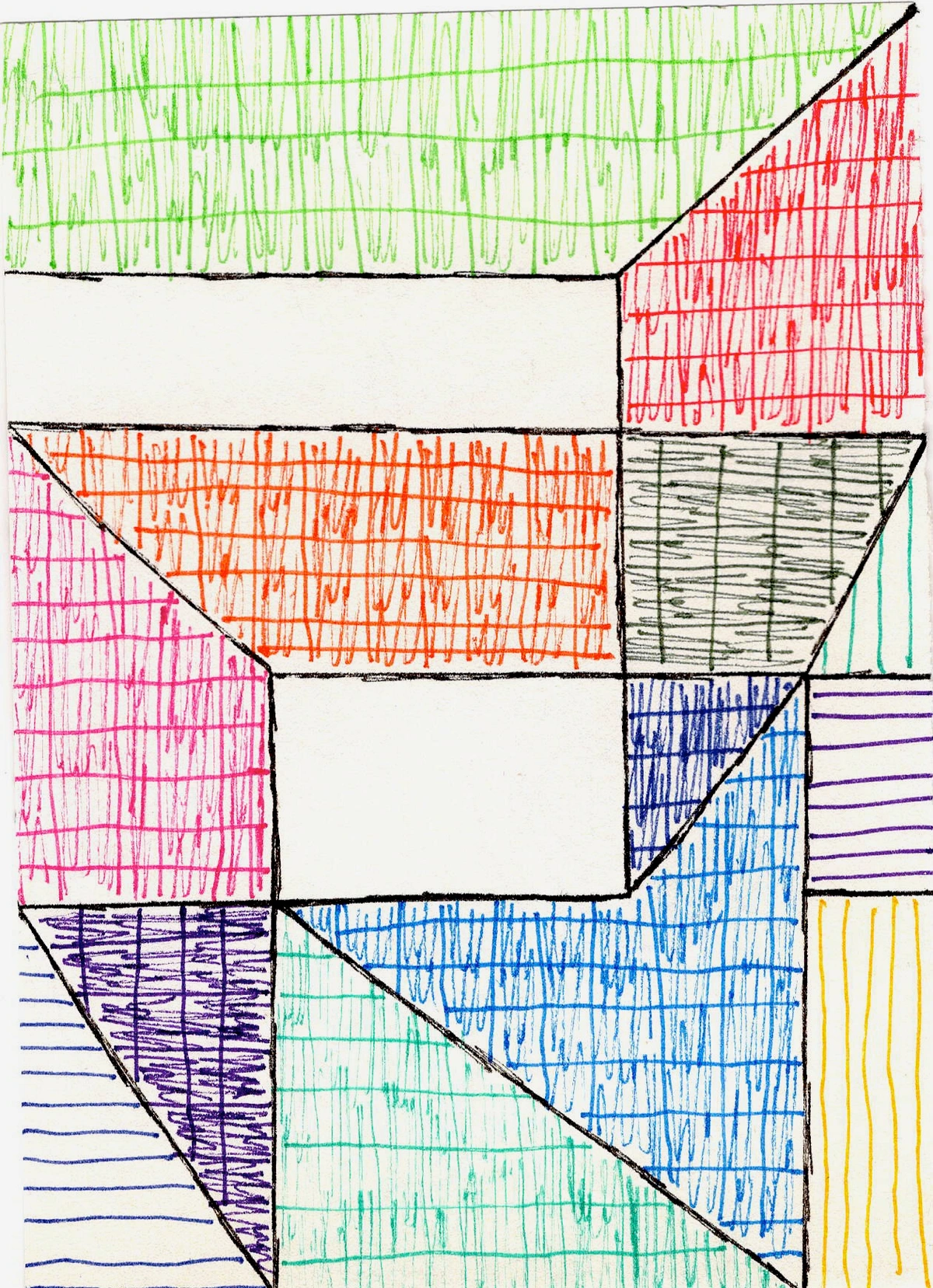
...right on my coffee table. It wasn't just 'art' in a formal sense; it became a conversation starter. Guests would often pick it up, turning it in their hands, asking about its origin. It subtly shifted the mood, transforming a functional surface into a dynamic focal point. It sparked joy, and that's the whole point, isn't it? This approach is a fantastic way to incorporate sculptural art into modern interiors without feeling stuffy. And don't forget the power of texture! I once paired a smooth, polished stone sculpture with a rough-hewn, live-edge wooden coaster, and the contrast was stunning – it created a tactile and visual dialogue, a 'sensory conversation' that truly brought both elements to life. What unexpected surface is waiting for your next sculptural resident?
Finding the Right Fit: Scale, Proportion, and Visual Weight
You know, once you've illuminated your masterpiece just right, there's this quiet challenge of making sure it truly belongs in its environment. I'm talking about proportion and scale. I once tried to squeeze a rather robust ceramic bust onto a narrow shelf, and it looked like it was perpetually trying to escape, visually screaming 'too cramped!' My first thought was, 'You wouldn't put a giant, sprawling sculpture in a tiny powder room, would you?' (Then I thought, 'Actually, that could be a hilarious, bold statement piece in the right eccentric home, but probably not mine!'). The key, I've found, is balance and proportion. When choosing where to place a sculpture – or even selecting one – it's crucial to think about its relationship to the space it inhabits, its scale, and its overall presence. Don't just consider the physical dimensions of the piece, but also the overall scale of the room itself. A monumental piece needs a grand space, while a delicate artwork might get lost in a cavernous room.
Beyond physical size and visual weight, it's vital to consider the intended viewing distance and how that influences placement. A delicate piece might need to be at eye level to invite close inspection, while a larger, more imposing work can command a room from a slightly lower vantage point, meant to be appreciated from across the room. How does the sculpture look from your favorite armchair? Does its presence change when you're standing, walking past, or even when you first enter the room? These shifts in your perspective can reveal new angles and create unexpected interactions, almost as if the sculpture is performing a subtle dance as you move through the space.
This is also where the concept of visual weight comes into play. It's distinct from physical weight. A sculpture with intricate details, complex forms, and dark, dense materials, even if physically small, can have a surprisingly heavy visual presence. Conversely, a large, airy, minimalist wire sculpture or a translucent glass piece might feel much lighter in a space. A small, intricate piece can get lost in a cavernous room, while a monolithic form can overwhelm a cozy nook. And don't forget the impact of texture: a highly textured piece with a rough finish or intricate surface might feel 'larger' or more imposing than a smooth, minimalist piece of the same physical dimensions because it demands more visual attention. It's also vital to consider the negative space around a sculpture – the empty areas that allow the piece to breathe and its form to be appreciated.
Finally, considering the artist's intent or the sculpture's narrative can offer profound guidance. For abstract works especially, understanding the artist's vision – whether it's about tension, flow, or a particular emotional landscape – can instantly suggest the perfect, most meaningful spot for it in your home. This is also where sculptural installations come into play: you don't always need one monumental piece; sometimes, a carefully curated grouping of smaller sculptures, perhaps of varying heights and materials, can create a powerful, cohesive visual statement that transforms an entire corner or alcove.
And don't forget the overall aesthetic of your home. Is it minimalist? A single, bold, clean-lined sculpture can be breathtaking. Is it bohemian chic? Then layering various textures and sizes, perhaps like this dynamic piece:
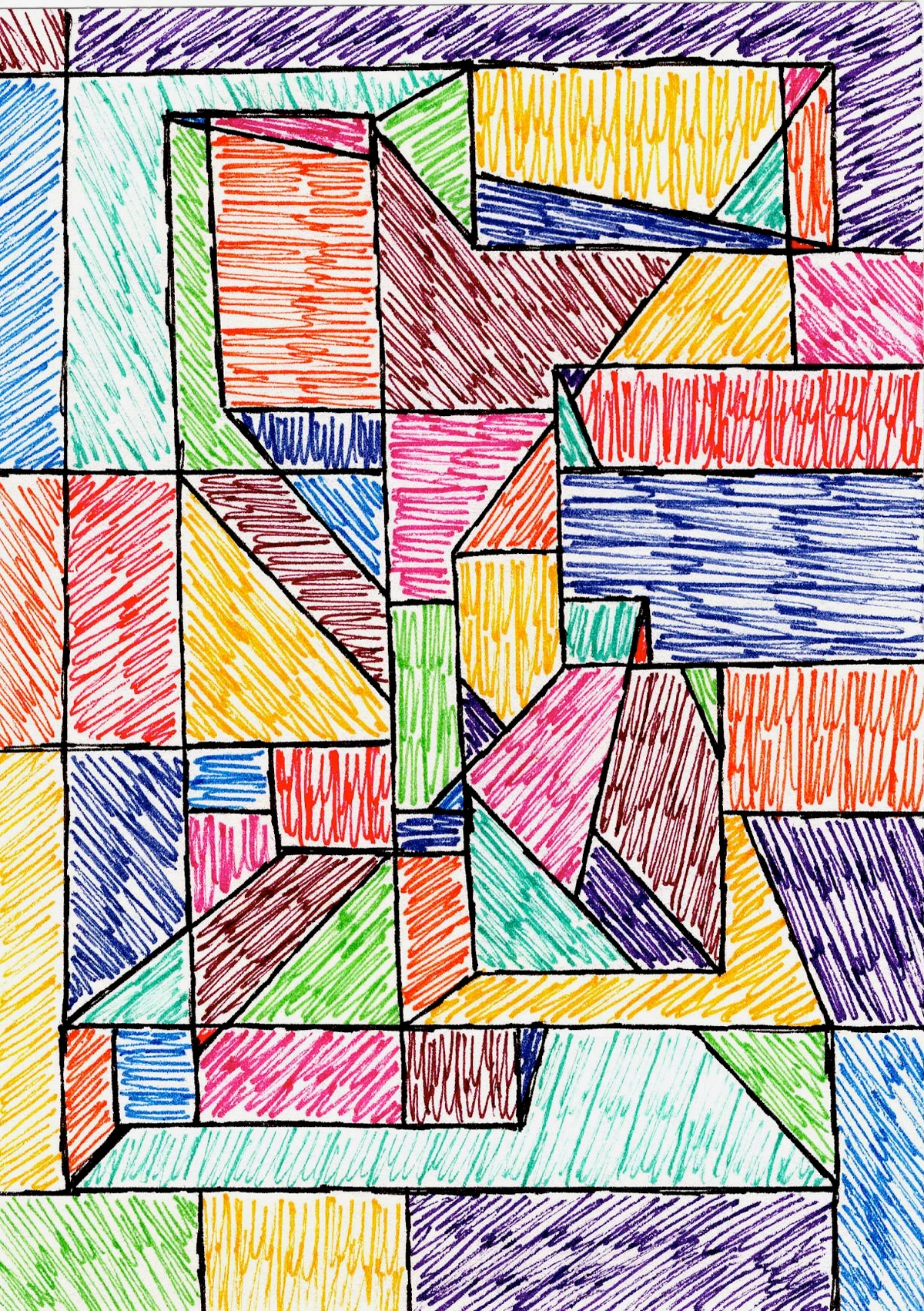
...could work wonders. Or perhaps your space calls for a sense of modern serenity, a style where even the dining area finds artistic expression:
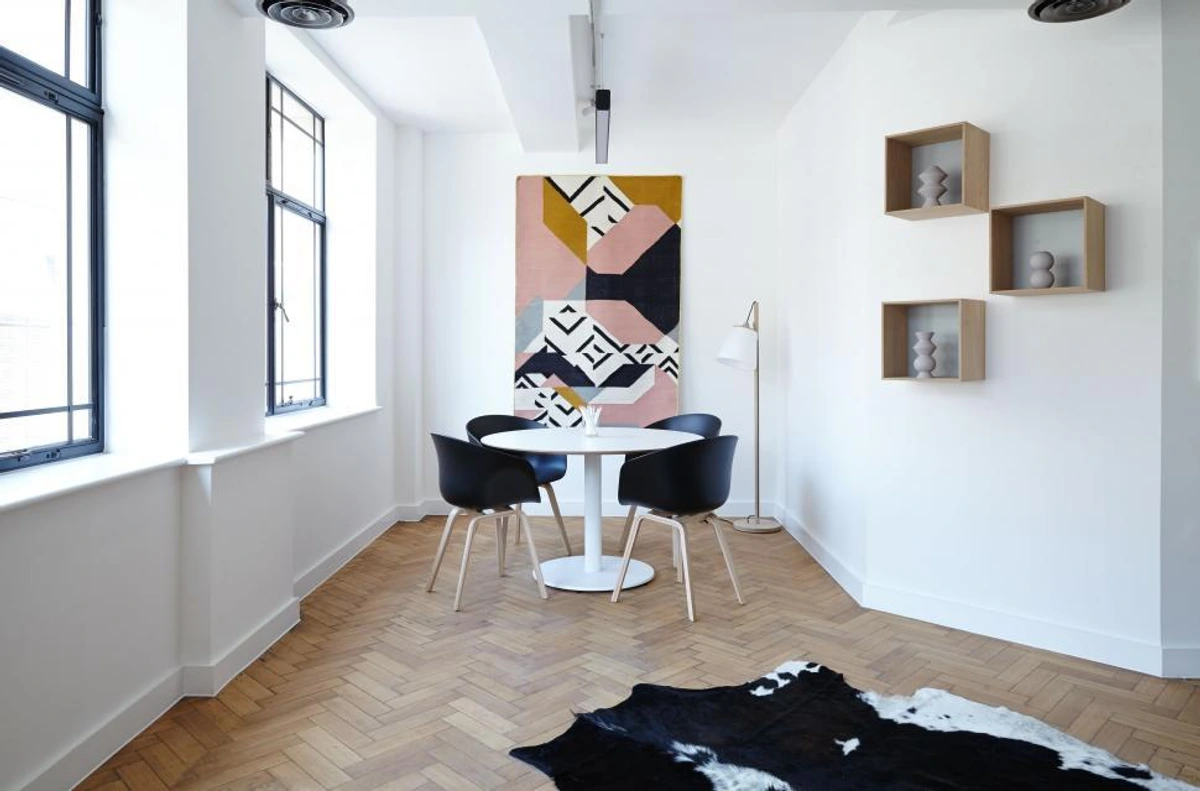
Choosing a sculpture that perfectly complements your interior style, or integrating a beloved "statement piece" into an existing decor, is all about thoughtful placement. For minimalist homes, look for sculptures with clean lines, monochromatic palettes, and simple, elegant forms. In bohemian or eclectic spaces, embrace sculptures with rich textures, vibrant colors, and organic shapes, often displayed in groups or vignettes. Don't be afraid to think outside the box, even in small spaces, where maximizing impact is key.
What visual balance will you strike in your space?
Defying Gravity: Elevated & Wall-Mounted Displays
But what if your sculpture has a desire to ascend, to defy gravity, to break free from horizontal surfaces altogether? This might sound a bit radical, especially if you're used to thinking of sculptures as floor-bound objects, but who says they can't go on walls? I'm not just talking about flat reliefs that blur the line between painting and sculpture; I'm referring to pieces with tangible depth and form that project from a surface. Sometimes, sculptures are even designed for this vertical world – think bas-reliefs, where forms slightly project from a flat background, or other forms of relief sculpture that bridge the gap between painting and three-dimensional art. Wall-mounted kinetic pieces, or even textile art with three-dimensional elements, are also perfect candidates. Imagine the drama of a piece mounted unexpectedly high, catching the light as you walk by. Of course, safety first! For wall-mounted pieces, you’ll always need to consider the weight of the sculpture and the type of wall material, investing in appropriate hardware. For lighter pieces, simple picture hangers might suffice, but for anything substantial, you'll want to look into specialized brackets, French cleats, or even professional art installation services. The planning is more involved, but the visual reward is often worth it.
Or what about shelves? Not just any shelf, but interesting shelves. The kind that make you do a double-take. A series of floating shelves, for example, each with a small, intriguing abstract form, can create a captivating vertical display. This is also where the concept of negative space truly shines. Think of negative space like the thoughtful pauses in a conversation, or the silence between musical notes; it allows the sculpture's form to resonate and its contours to be fully appreciated. It's the empty space around and within the sculpture that defines its boundaries and helps it "breathe." When light hits these elevated pieces, the shadows they cast on the wall behind or below them become an integral part of the artwork, adding depth and dynamic interaction with the surrounding architecture. It’s a crucial element that profoundly influences how we perceive the sculpture! It's a fantastic way to explore creative ways to display abstract art in unexpected spaces, adding a new dimension to your decor. Here’s an example of the kind of vibrant, multi-dimensional piece that could shine on a well-placed shelf:
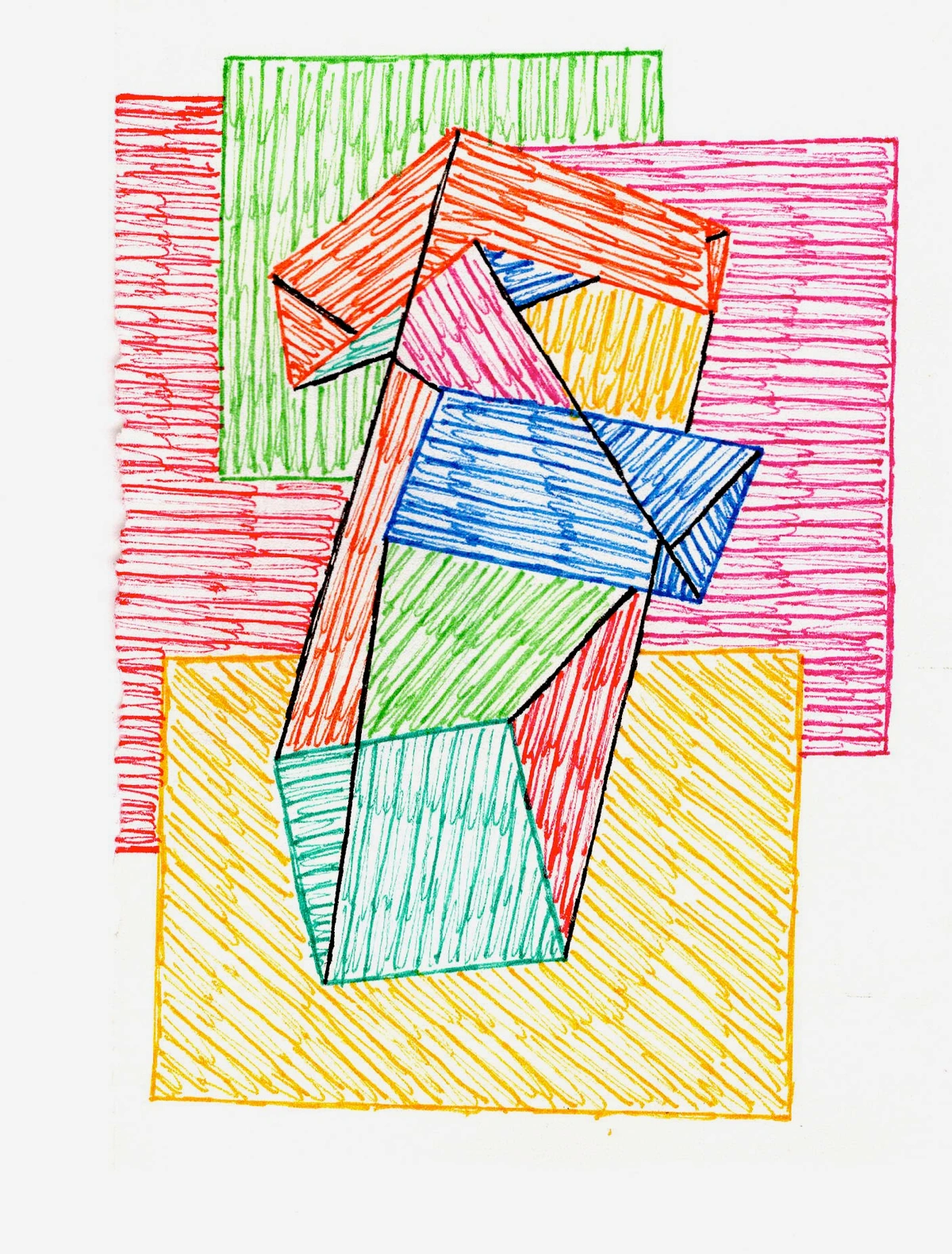
Or perhaps even something truly unexpected, like these suspended forms, defying gravity and transforming the entire space:
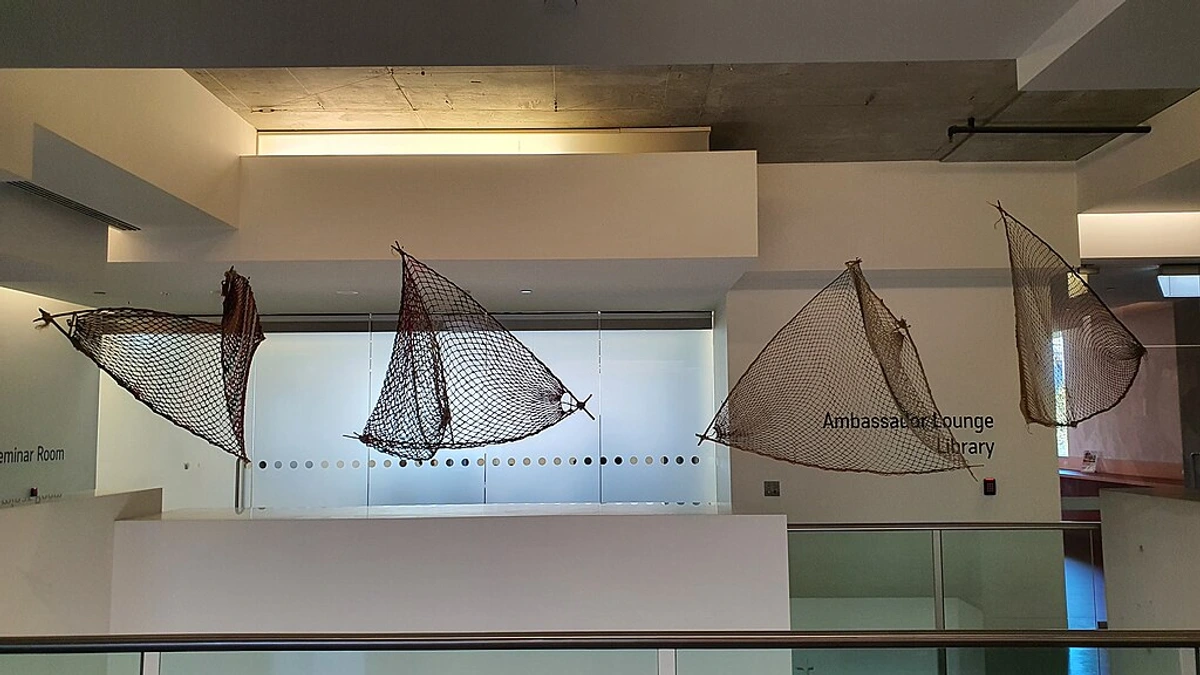
How else can you give your sculptures new heights and unexpected perspectives?
The Art of the Vignette: Creating Little Worlds
Beyond just placing a sculpture, we can actively curate its environment to tell a story. This is where the true magic often lies, transforming the sculpture's surroundings into a curated moment. This is where my inner storyteller really comes out. A vignette, for those who haven't dabbled, is like a mini-stage set. It's a curated arrangement of objects that, together, tell a story or evoke a feeling. It's not just putting things next to each other; it's about creating a harmonious (or delightfully discordant) dialogue between disparate items. And crucially, it's about considering the scale and proportion within the vignette itself – ensuring your sculpture is the star, but not so dominant that it overwhelms its supporting cast, nor so small that it gets lost among them. The supporting objects should enhance, not compete with, the main piece. You also want to consider the overall color palette of your vignette, ensuring it either complements the sculpture's hues or creates an intentional, intriguing contrast. I remember one specific vignette I created: a small, dark bronze abstract figure nestled among a stack of worn travel guides, a dried succulent in a terracotta pot, and a handful of colorful, unusual pebbles I'd collected from a beach trip. It evoked a sense of quiet adventure, a journey both taken and imagined.
I often pair a dynamic sculpture with a stack of old books, a peculiar plant, a textured vase, or even another, smaller piece of art. The key is to think about how different elements can speak to each other:
- Harmonious pairings: A smooth, minimalist ceramic sculpture nested alongside river stones or a delicate glass vase filled with dried botanicals. This evokes calm and natural elegance.
- Discordant dialogues: Juxtaposing a sleek metallic abstract piece with a rough-hewn wooden bowl, or a smooth ceramic form among a collection of vintage keys. This creates visual tension and sparks intrigue.
- Storytelling themes: Imagine a playful, colorful sculpture surrounded by vintage toys (perhaps some beloved, quirky ones from your childhood) or unique curios from your travels (like a carved wooden bird or a vibrant piece of sea glass), creating a sense of nostalgia or adventure.
Each element converses with the others, building a whole mood and making the sculpture feel less like an isolated object and more like a character in a carefully constructed scene. Understanding the elements of sculpture really helps here, as you start to see how form, texture, and color interact not just within the sculpture, but with its surroundings.
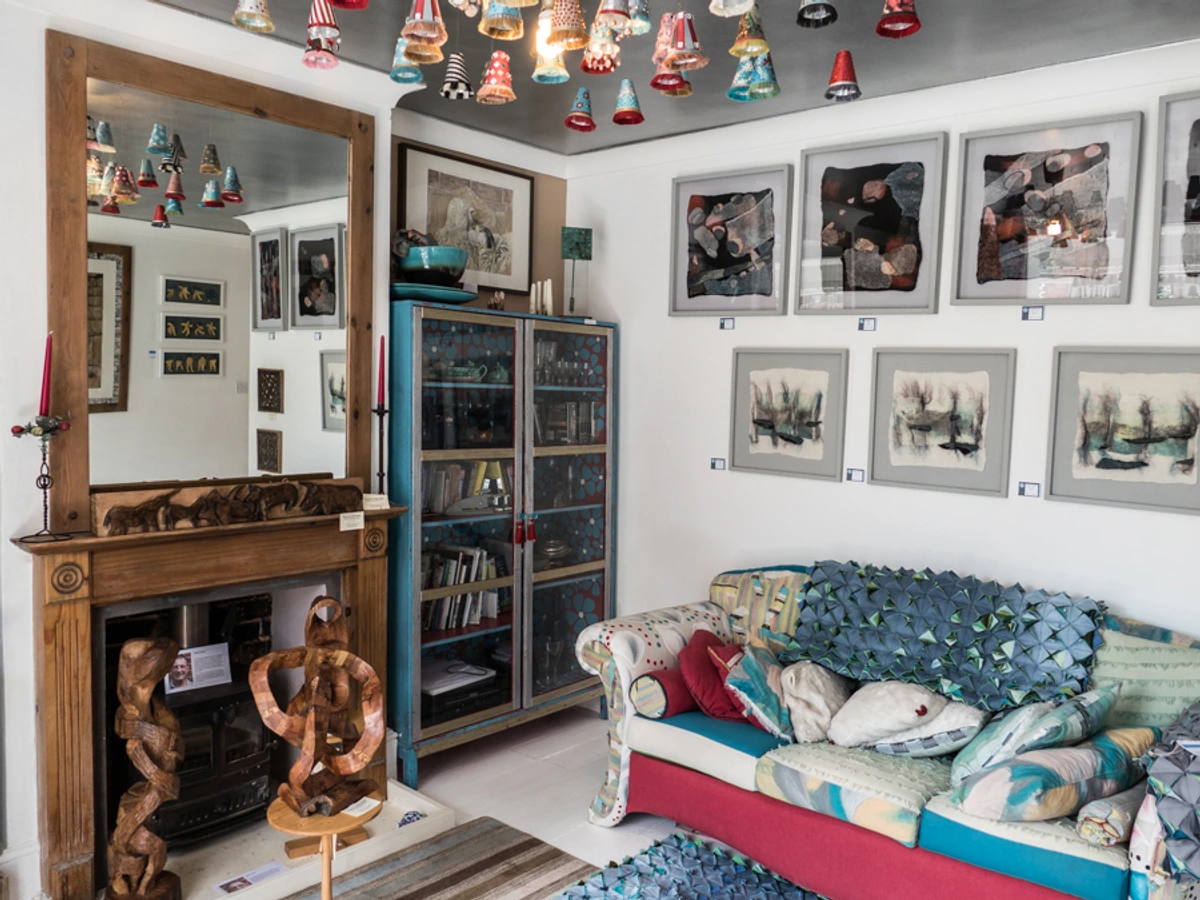
What story will your next vignette tell?
Shine a Light: Illuminating Your Masterpiece
Okay, full confession: I once spent an hour arranging a sculpture perfectly, only for it to disappear into shadow the moment the sun went down. Facepalm, right? I even once managed to accidentally blind myself with a badly aimed spotlight. Lighting is a game-changer. It's not just about seeing the sculpture; it's about experiencing it. A well-placed spotlight can highlight textures, create dramatic shadows that add depth, and literally sculpt the sculpture with light, revealing nuances you might otherwise miss. Consider the direction of light too: top-down lighting can emphasize verticality and smooth forms, while side-lighting can dramatically reveal intricate textures and contours.
Think about using accent lighting (focused light on a specific object) to draw attention to your sculpture, perhaps complemented by softer ambient lighting (general room illumination) that allows the rest of the space to feel inviting. And speaking of modern advancements, have you considered LED lighting? It's incredibly energy-efficient, produces minimal heat (a big plus for preserving delicate artworks!), and offers fantastic control over color temperature and intensity. It's truly a game-changer for bringing out the best in your pieces. Beyond direction, consider the color temperature of your lighting. Warmer lights (around 2700K-3000K, think soft white or warm white) tend to bring out the richness of earthy tones, wood, or bronze, making them feel cozy and inviting. Cooler lights (3500K-4000K, think neutral white or cool white) can make metallics, glass, or vibrant abstract pieces pop with crispness and clarity. It's a trick galleries use all the time, and there's no reason we can't bring that magic home. One crucial note: be mindful of direct, intense sunlight, especially for pieces made of organic materials, delicate pigments, or those with delicate finishes, as it can cause fading, warping, or damage over time. If direct sunlight is unavoidable, consider UV-filtering glass for nearby windows or protective coatings for the sculpture itself. Also, remember to consider the overall environment – high humidity, extreme temperature fluctuations, or proximity to heat sources like radiators or fireplaces can also negatively impact delicate materials. For more detailed insights, check out this guide on how to light and position abstract art for maximum impact.
How will you illuminate your art to reveal its hidden depths?
My Journey Continues: Finding Your Own Display Groove
Ultimately, this isn't about following a rigid rulebook written by someone else. It's about finding what sparks joy and curiosity in your space. My own journey, which started with a bit of intimidation and a whole lot of playful experimentation, continues to evolve. Each time I move a piece, it's not just about a new spot; it's about seeing it anew, understanding its dialogue with the changing light or a newly introduced object. Your home is your canvas, and your sculptures are waiting for their moment in the spotlight. Don't be afraid to move things around, to try something outlandish, or even to hide a piece away for a while and rediscover it later with fresh eyes. Perhaps a subtle nod to history, like placing a modern piece in a classical setting, could create an unexpected conversation, much like the Bauhaus artists challenged conventional forms.
The goal is to cultivate a space where your art feels truly at home, integrated and alive, reflecting your unique story. Perhaps you'll find inspiration in my latest abstract pieces, seeing how they are designed to interact with modern interiors. Or, visiting my museum in 's-Hertogenbosch could spark some ideas for grander displays and how artists envision their work in larger settings. What stories are your sculptures telling? Share your unique display ideas and connect with other art lovers on social media using #MySculptureStory. Let's make every home a living gallery.
FAQ: Displaying Sculptures Indoors
Displaying sculptures creatively can spark many questions. Here are some answers to common queries to help you on your journey:
How do I secure sculptures on shelves or other surfaces?
For stability, especially with heavier or taller pieces, consider using museum wax or earthquake putty. These materials provide a firm, non-damaging grip, preventing accidental topples from curious pets or clumsy humans. For wall-mounted pieces, always use appropriate hardware for the weight of the sculpture and the type of wall material, ensuring it's securely fastened into studs or with suitable anchors.
Can I display outdoor sculptures indoors?
Absolutely, as long as the material is suitable for an indoor environment. Some outdoor sculptures are designed to withstand harsh weather and might look out of place indoors due to their scale or aesthetic, but many smaller, weather-resistant pieces can make striking indoor statements. Just be mindful of materials that might rust, degrade, or release odors in a closed environment. Always consider how the piece's original context translates to an indoor setting, and if it still conveys its intended meaning or takes on a new one.
What about fragile pieces? How can I protect them?
Fragile sculptures require extra care. Place them in low-traffic areas where they won't be easily bumped. Consider displaying them within a display cabinet or on a sturdy, dedicated surface that won't easily vibrate. For particularly delicate pieces, you might want to invest in a custom acrylic cover or display case to protect them from dust and accidental damage.
How often should I rearrange my sculpture displays?
As often as you like! I find that moving things around every few months, or even just seasonally, can completely refresh a room and allow me to see my art with new eyes. It's a wonderful way to keep your home feeling dynamic and alive, and it lets you experiment with different light conditions and pairings, discovering new dialogues between your pieces and your space.
How do I clean and maintain indoor sculptures?
Maintenance depends heavily on the material. For most non-porous surfaces like polished metal, ceramic, or glass, a soft, dry microfiber cloth is usually sufficient for dusting. For wood, a slightly damp cloth followed by a dry one, or a specialized wood cleaner, might be appropriate. Always test any cleaning method on an inconspicuous area first, especially for unique or experimental materials, to avoid damage, and avoid abrasive cleaners or brushes, even on seemingly robust materials. Always avoid harsh chemicals, and if unsure, consult the artist or a conservator. Regular, gentle dusting is key to preventing buildup.
How do I choose sculptures that fit my interior style or integrate a statement piece?
It's all about finding harmony or creating intentional contrast. For a cohesive look, choose sculptures whose forms, colors, and textures complement your existing decor. For example, minimalist interiors benefit from clean lines and subtle hues, while eclectic spaces thrive with varied textures and bold forms. When integrating a "statement piece" that might not perfectly match, give it ample negative space and use lighting to emphasize it. Consider using transitional elements like a textured rug, a complementary colored throw, or a unique plant to bridge the visual gap between the statement piece and your existing decor. Remember to also consider the overall scale of the room itself; a large statement piece needs sufficient space to be appreciated without overwhelming the environment. Sometimes, a well-chosen contrasting piece can add unexpected depth and personality to a room.
How do acoustics factor into displaying sculptures, especially those with moving parts or sound?
For sculptures made of materials like metal, which can resonate, or those with kinetic elements, considering the acoustics of your space can be important. In rooms with many hard surfaces (wood floors, bare walls), a metallic sculpture might amplify sounds, creating an echo. Placing such pieces on a rug or near soft furnishings can help absorb sound. Conversely, in a very soft room, a resonant sculpture could add an interesting auditory dimension, perhaps becoming a subtle background 'voice' in the room. This applies especially to kinetic sculptures which inherently have movement and sometimes subtle sounds. It's a subtle but fascinating element to consider for a truly immersive experience.
How do I choose sculptures appropriate for specific room functions?
Consider the room's purpose and traffic. For a busy entryway, durable, stable sculptures are best. In a quiet study or bedroom, more delicate or intricate pieces can create a focal point for contemplation. For a bathroom, opt for materials resistant to humidity and temperature changes. Always think about how the sculpture will interact with the room's daily life and activity, ensuring it enhances, rather than obstructs, the function of the space.
How do I ensure sculptures are safe in homes with children or pets?
For active households, safety is paramount. Beyond using museum wax or earthquake putty for stability, choose robust, non-toxic materials for pieces placed within reach. Avoid sculptures with sharp edges, small detachable parts (choking hazards), or easily toppled forms in high-traffic areas. Consider placing more delicate or precious pieces on higher shelves, inside display cabinets, or even behind clear acrylic barriers. For pets, especially climbing cats or playful dogs, consider the height of placement, ensuring pieces are out of reach or securely fastened to prevent accidental knocks during play. It’s all about finding that balance between accessibility and protection.




